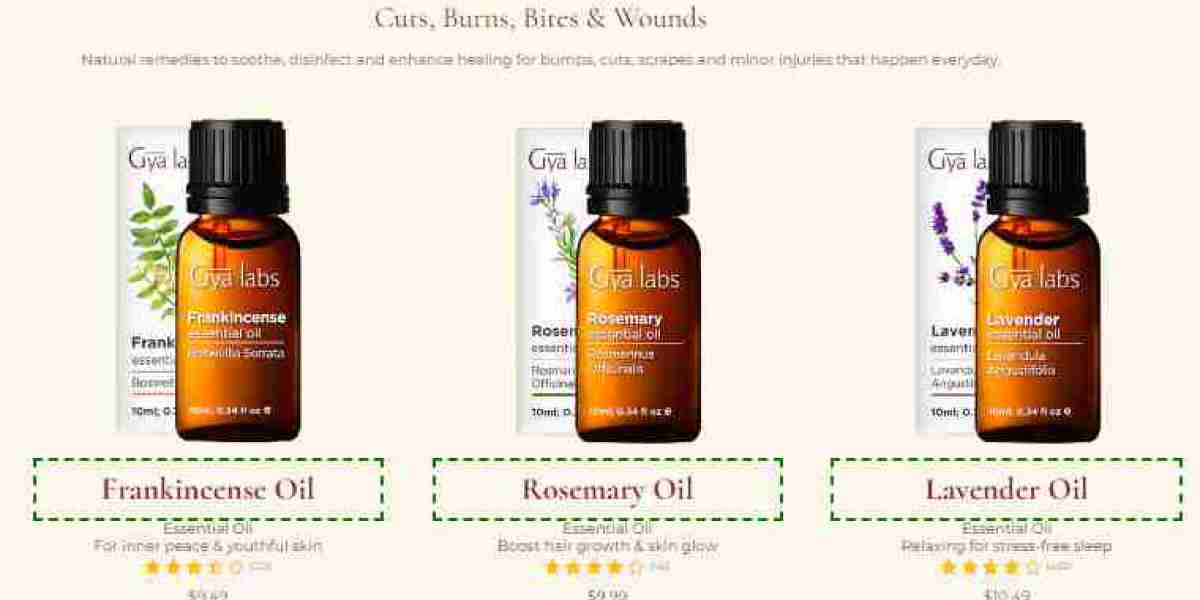Essential oils have been used for centuries to help promote wound healing. Many oils have antimicrobial, anti-inflammatory, and antioxidant properties that can support the body's natural healing process. When it comes to using essential oils for wounds, not all oils are created equal. Some have more research backing their efficacy than others. Here’s an overview of the science behind some of the best essential oils for wound care.
Tea Tree Oil
Tea tree oil is distilled from the leaves of the Melaleuca alternifolia plant, native to Australia. It contains powerful antimicrobial compounds like terpinen-4-ol that make it effective at killing bacteria, viruses, and fungi. Studies show tea tree oil is active against antibiotic-resistant superbugs like MRSA. The oil also reduces inflammation and accelerates wound closure. In one study, topical tea tree oil healed abrasions faster than conventional antiseptic treatments. Overall, human and animal research suggests tea tree oil accelerates wound healing while preventing infections.
Lavender Oil
Lavender oil is extracted from Lavandula angustifolia flowers via steam distillation. Its primary active compound, linalool, gives lavender oil both antimicrobial and anti-inflammatory properties. Multiple studies indicate lavender oil accelerates wound closure and contraction. Lavender also enhances collagen production, critical for tissue regeneration. In rat studies, lavender oil increased collagen levels in wounds while also reducing scar tissue formation. Both linalool and lavender oil improve rates of wound closure and healing when applied topically.
Helichrysum Oil
The flowers of Helichrysum italicum yield an oil rich in antioxidant and anti-inflammatory compounds like italidiones and curcuminoids. These compounds stimulate tissue growth while decreasing inflammation. Helichrysum also contains several flavonoids which promote wound healing via antioxidant activity, increasing collagen production, and reducing scar formation. Multiple animal studies show helichrysum oil decreases inflammation, increases antioxidant activity, and accelerates wound contraction and closure. Through its tissue regenerative and antioxidant effects, helichrysum oil supports faster healing.
Frankincense Oil
Frankincense oil is derived from the resin of Boswellia trees. It contains boswellic acids that reduce inflammation and fight bacteria. Frankincense stimulates the growth of new tissue while reducing scarring. In animal studies, frankincense oil decreased wound area and accelerated healing. When compared to standard antibiotic cream, frankincense oil better inhibited microbial growth while also decreasing wound inflammation and encouraging tissue regeneration. For these reasons, frankincense oil demonstrates strong potential for wound healing.
Geranium Oil
Geranium oil is steam distilled from Pelargonium graveolens leaves. One of its main components is citronellol, a monoterpenoid with antioxidant and antimicrobial effects. Geranium oil promotes wound healing through several pathways. First, it controls infection through antibacterial activity against multiple drug-resistant bacteria. Second, geranium reduces inflammatory cytokines to lower inflammation. Third, it raises antioxidant status to combat oxidative stress. Better antioxidant capacity also preserves tissue granulation and collagen. Altogether, geranium oil supports faster wound repair through antimicrobial, anti-inflammatory, and antioxidant mechanisms.
How to Use Essential Oils for Wounds
To use essential oils for wound healing, it’s important to dilute them first in a carrier oil. Oils should not be applied directly to wounds undiluted as they can irritate the skin. For wound care, it’s best to dilute to around 1% concentration. This equals around 6 drops of essential oil per 1 ounce of carrier.
Some of the best carrier oils to use are coconut, jojoba, olive, or sweet almond oil. Dabbing a small amount of the diluted oil around the edges of the wound supports healing while avoiding direct contact and irritation. Essential oils should not be used on deep, closed, or stitches wounds.
Other tips for safe use:
- Perform a patch test on normal skin first to check for allergic reaction before wide-scale use. Discontinue if irritation occurs.
- Never ingest essential oils
- Avoid sun exposure after applying oils as many increase sun sensitivity
- Keep out of eyes, ears, and other sensitive areas
- Store in dark bottles in a cool, dry location for longevity
The topical use of properly diluted essential oils can provide added antimicrobial, anti-inflammatory, and antioxidant support for wound healing. Sticking to oils with proven effects backed by research is best. With responsible use, essential oils can be a beneficial addition to wound care regimens. But they should not replace medical treatment when necessary. By understanding the science behind essential oils, you can make informed choices about using them for minor wounds.








